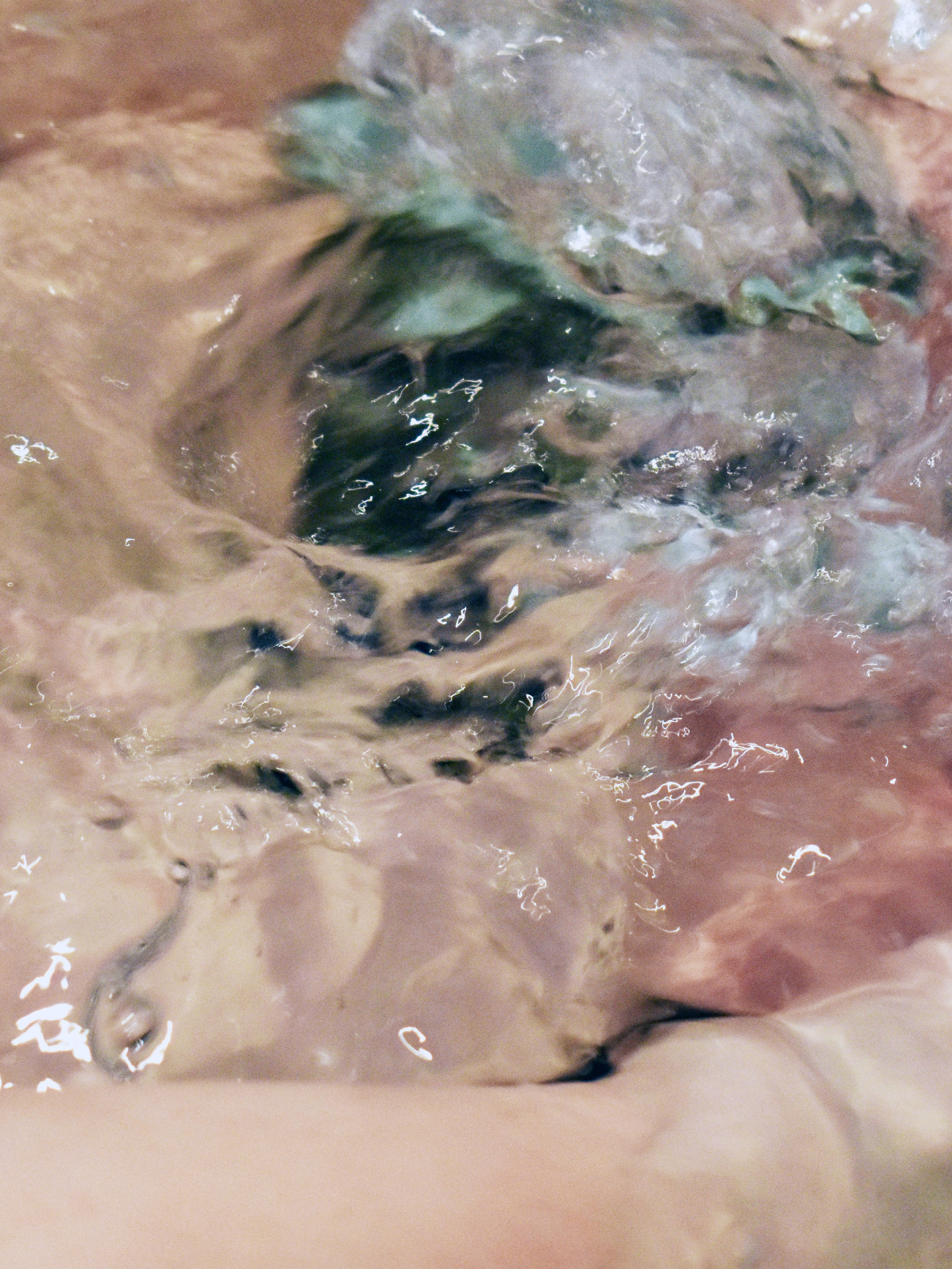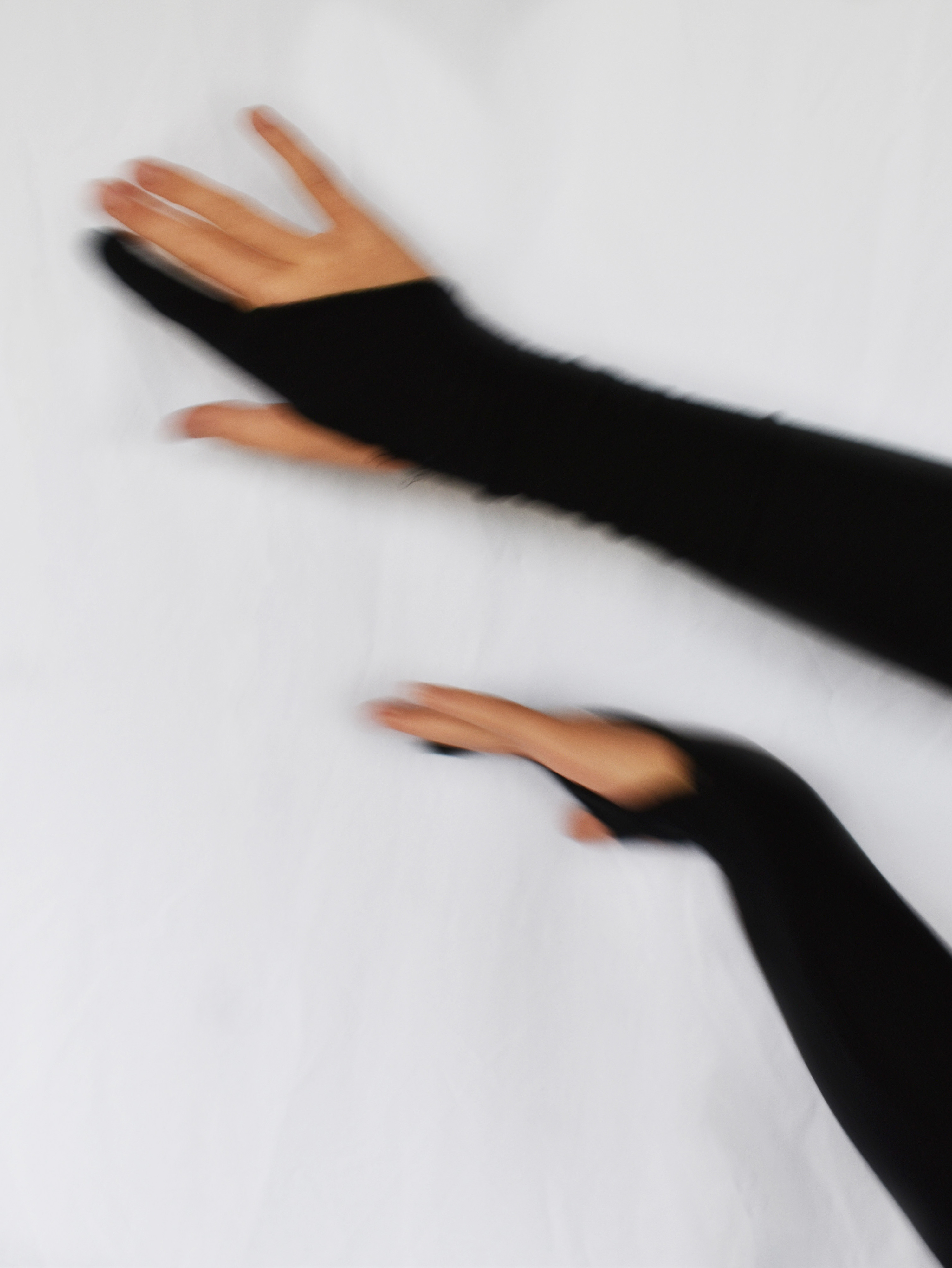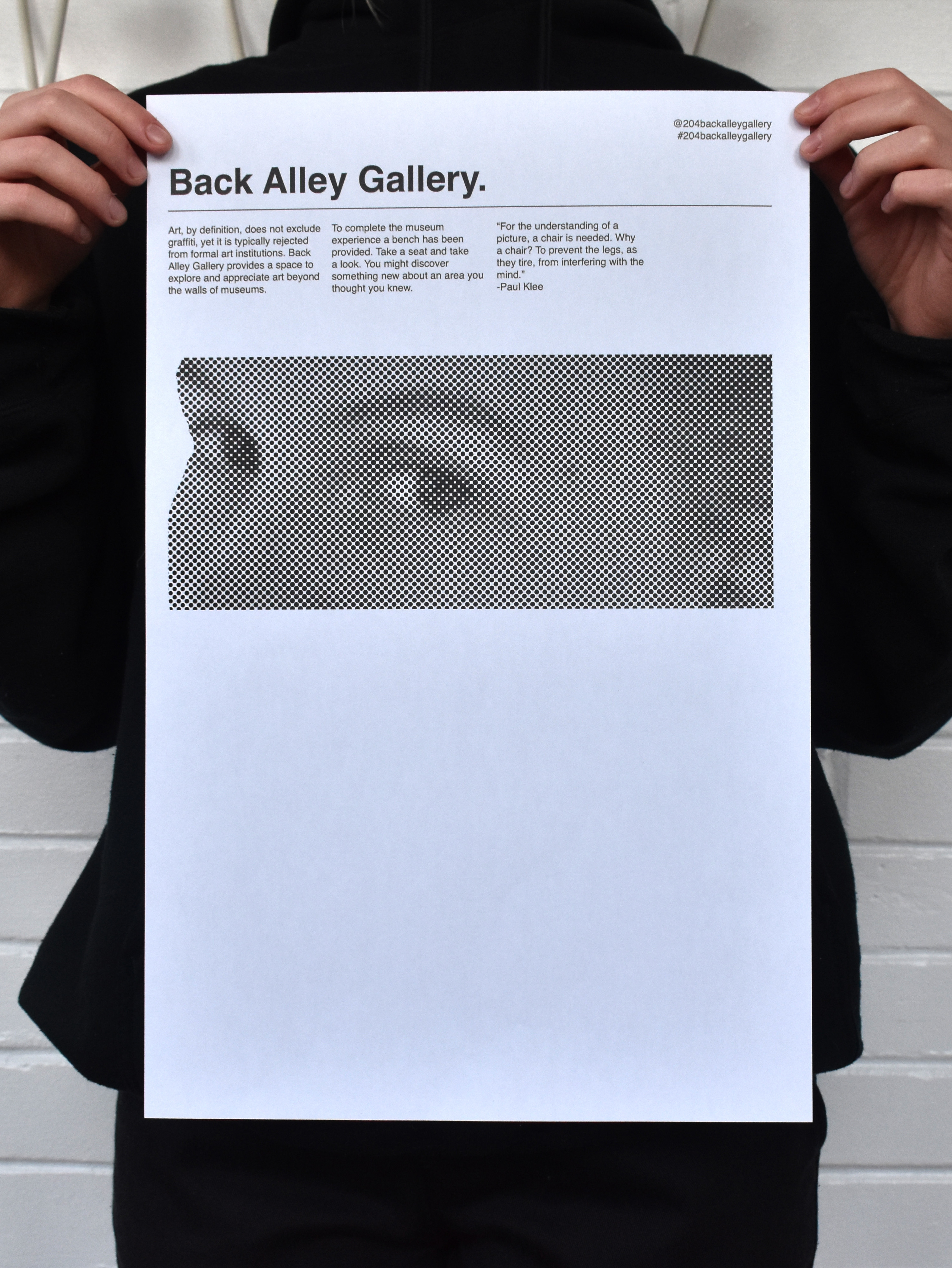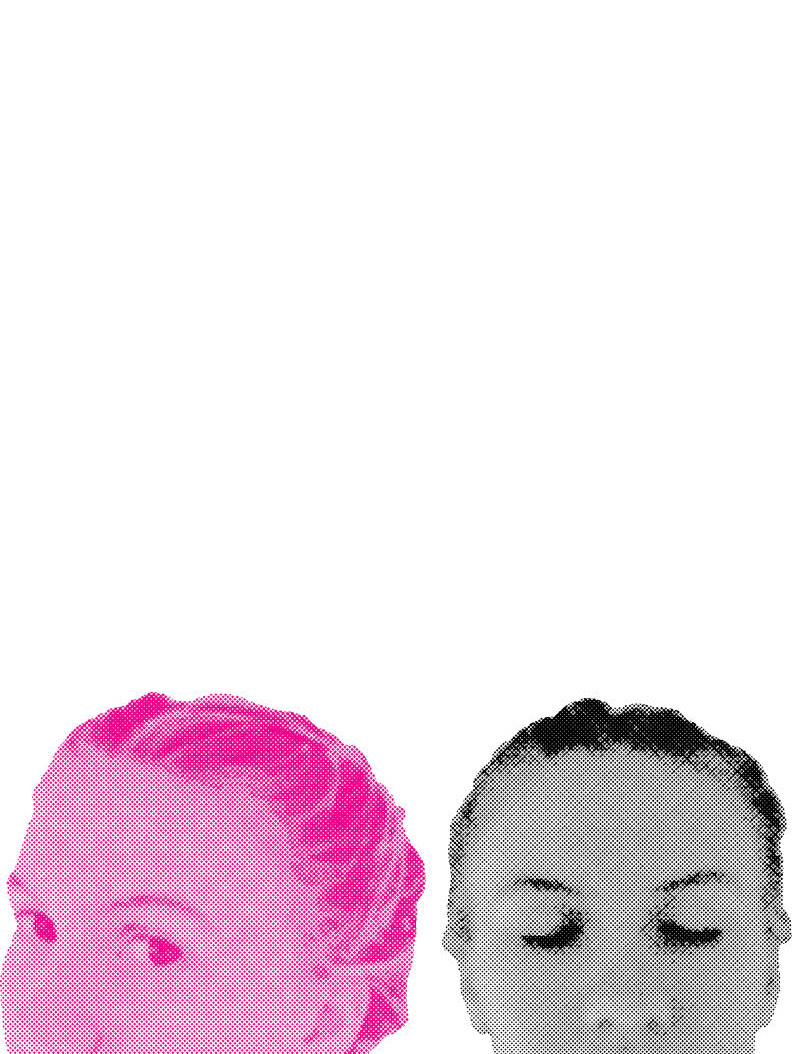FEAST_MATERIAL
01.18.21-02.24.21
Our eating habits are as varied as we are as individuals. They reflect our cultures and traditions, personal histories and families, rituals, and daily routines. We feast in many ways in many contexts; in dining rooms used only on sacred occasions with special silverware, in the seats of our cars, bleary-eyed as we exit a drive-through unfolding our sandwich from paper with one hand, while the other hand steers the wheel, and through screens with our friends and families close and far as we navigate what it means to feast together, separately. What is the role of feasting in our lives? How/when does the ritual of eating ground us to one another, our environment, materials, and place? What are the roles of the spaces, objects, and traditions that define our unique understanding, relationships, and experiences of eating? How can we design (engage or modify) the experience of eating/feasting to achieve an intention? What are the roles of materials in this context, against the backdrop of sustainability and physical distancing, tradition, convenience, immediacy and ritual? How do specific material functions determine form, experience, and meaning in such contexts? What are the visible/invisible qualities within our designed concepts? Can we (re)engage those qualities through material modulations? If so, how (how far)? How (how much)?
(IN)VISIBLE AFTERMATHS
Food aftermaths of feasting are tangible; dirty dishes and napkin stains. Feasting, however, is more than just consumption. How may we measure the invisible qualities of feasting?
This inquiry began in analyzing this photo series. Centred around a kitchen table, my Grandmother and friends gather for several feasts. It appears these scenes have little to do with food, but rather socialization. Some feasters loud and laughing, others reserved observers. Could the aftermath of socialization become a physical remnant of the feast?
A ritual feast in my home is weekend coffee. All table settings are passed and shared. To explore the notion of social roles and interaction, the vessels were tied together to encourage more thoughtful interaction between feasters. This experiment exposed a new possibility; measuring interaction through disorder.
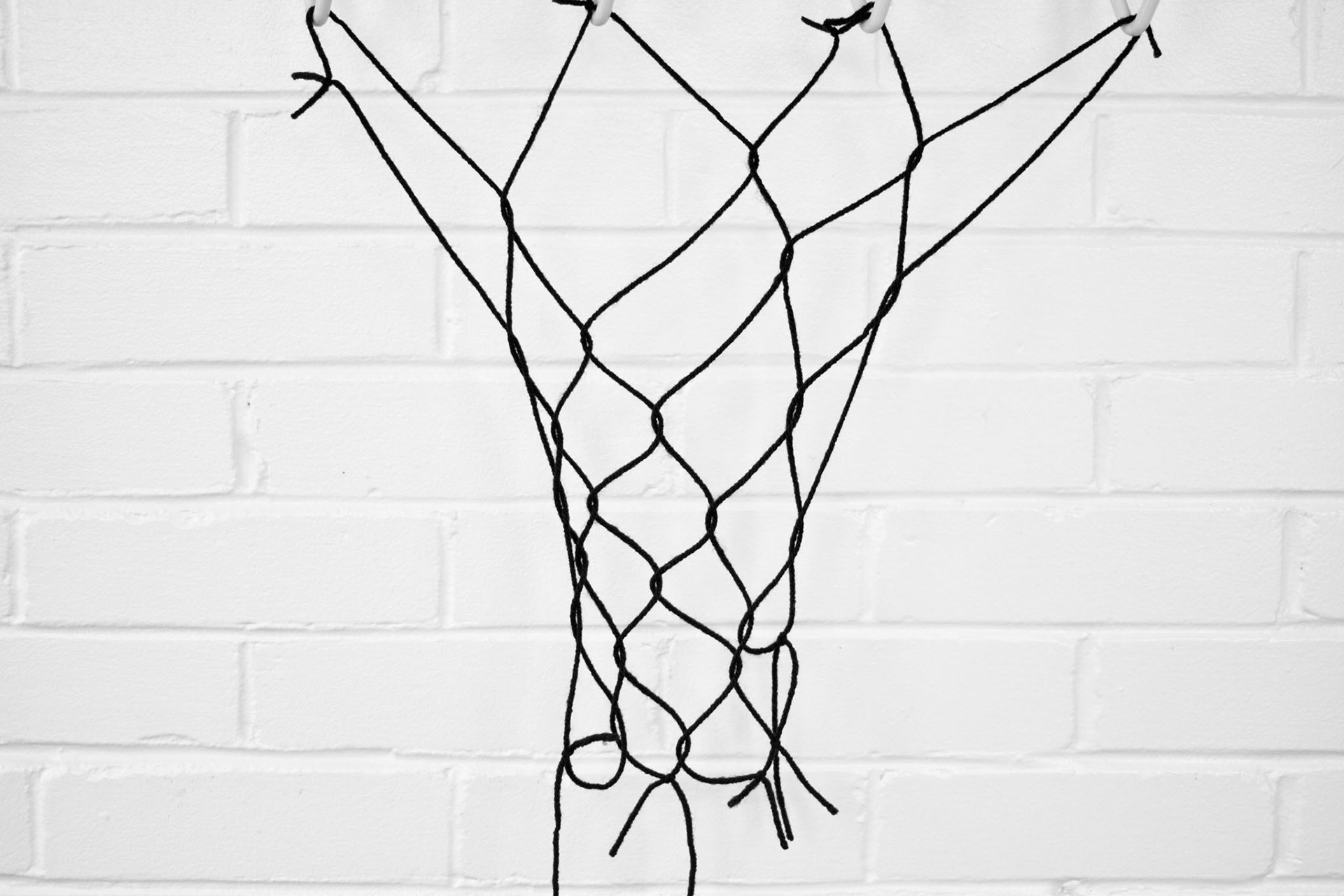


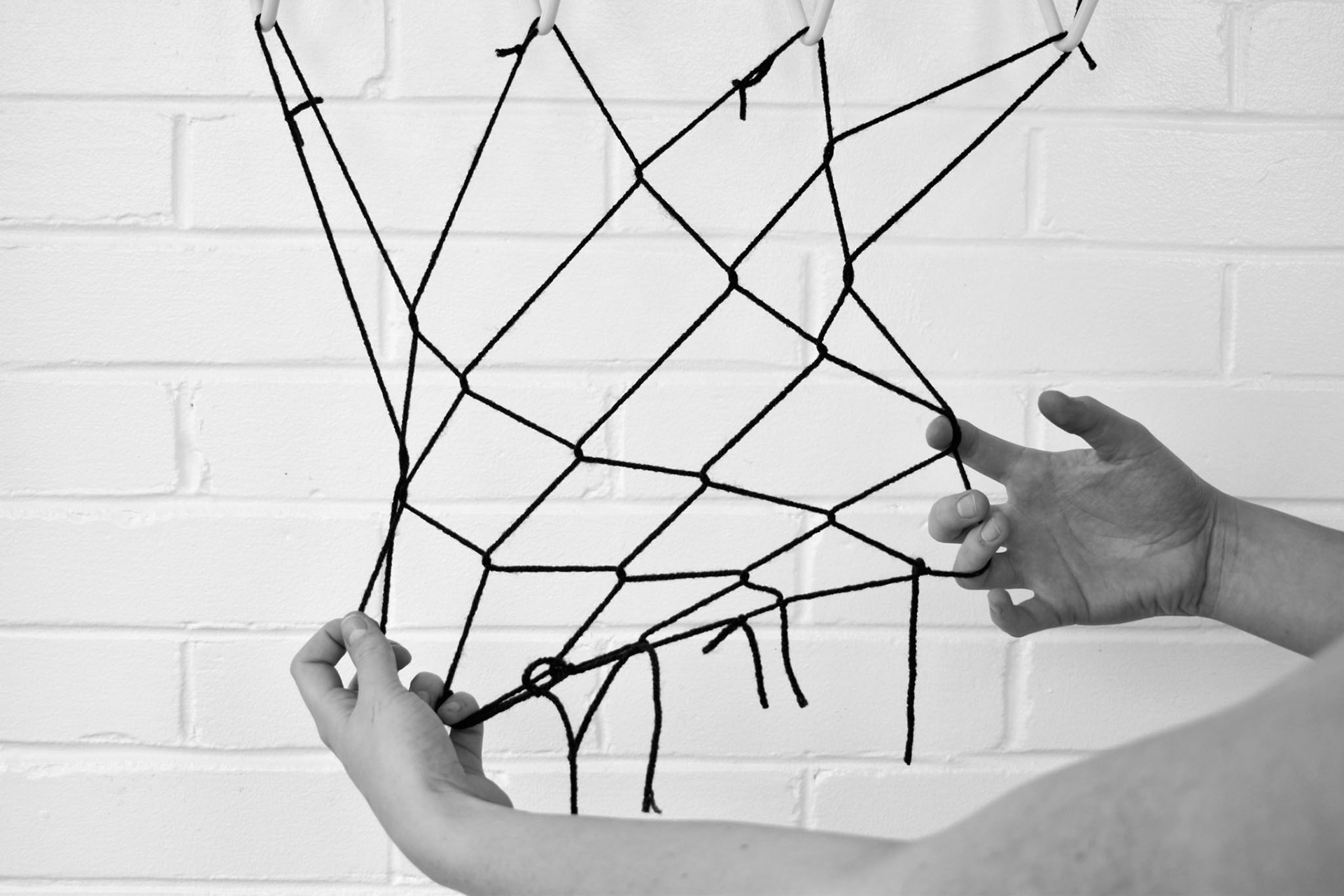
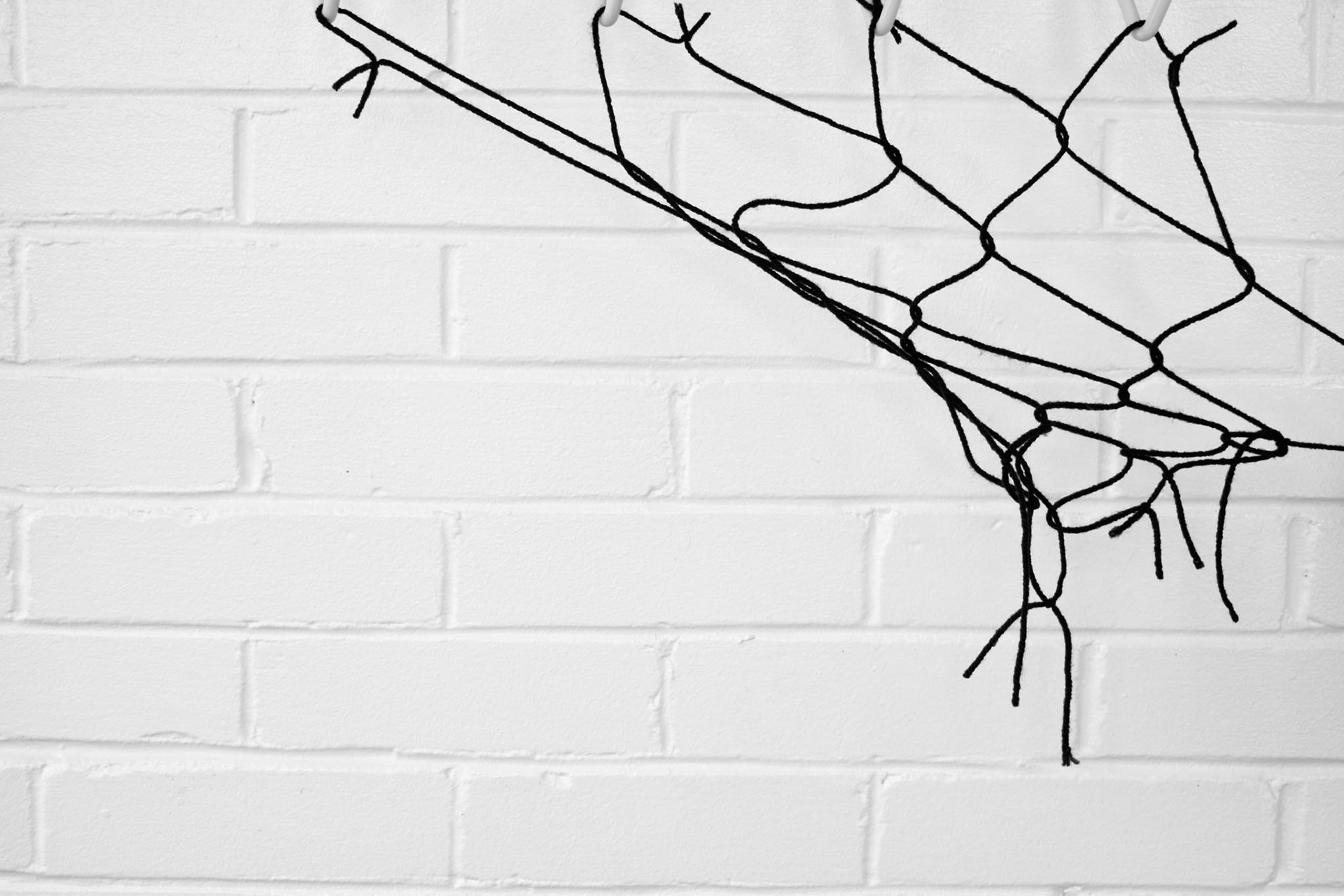
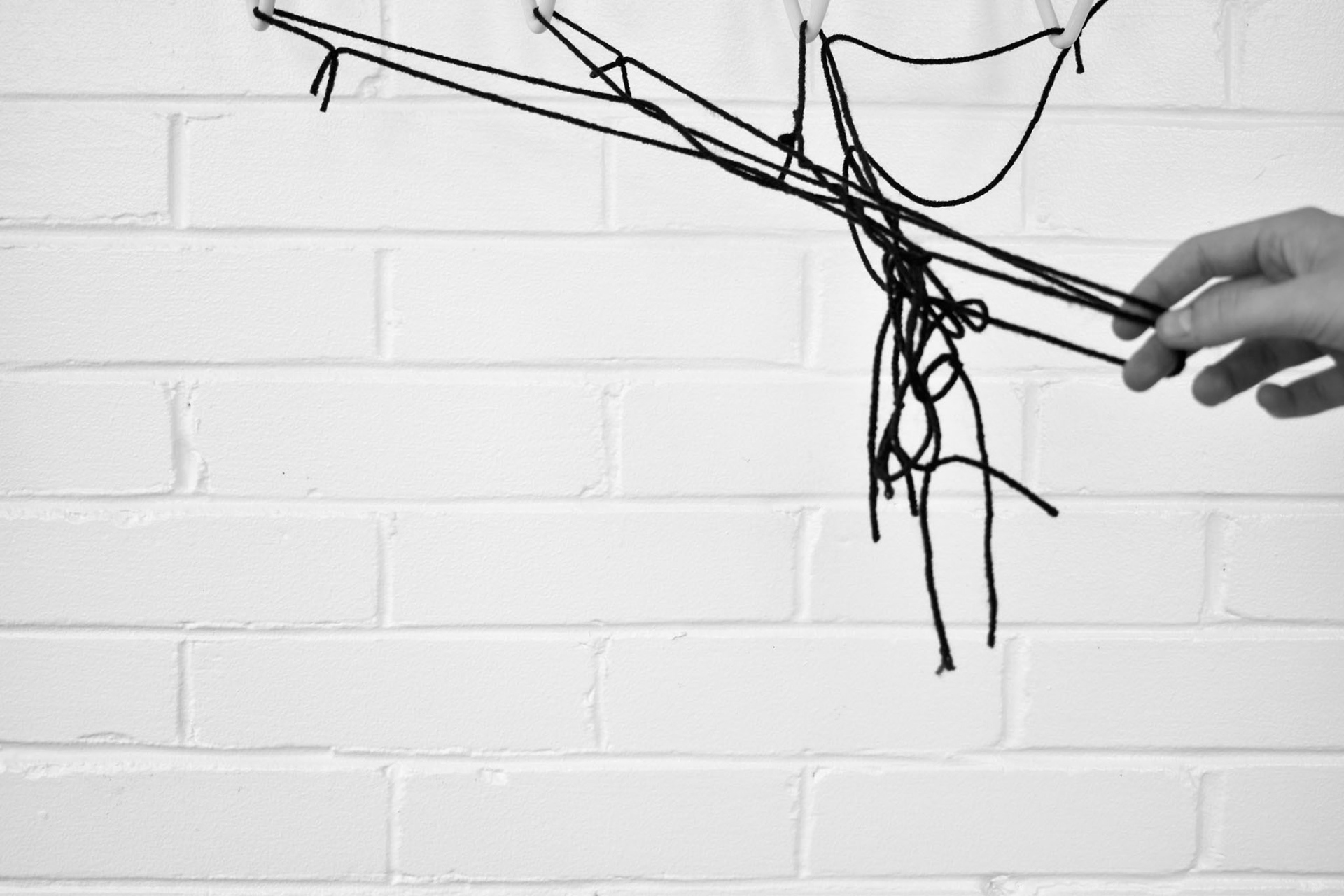
A ritual feast in my home is weekend coffee. All table settings are passed and shared. To explore the notion of social roles and interaction, the vessels were tied together to encourage more thoughtful interaction between feasters. This experiment exposed a new possibility; measuring interaction through disorder.
Weaves were explored as a means to capture movement



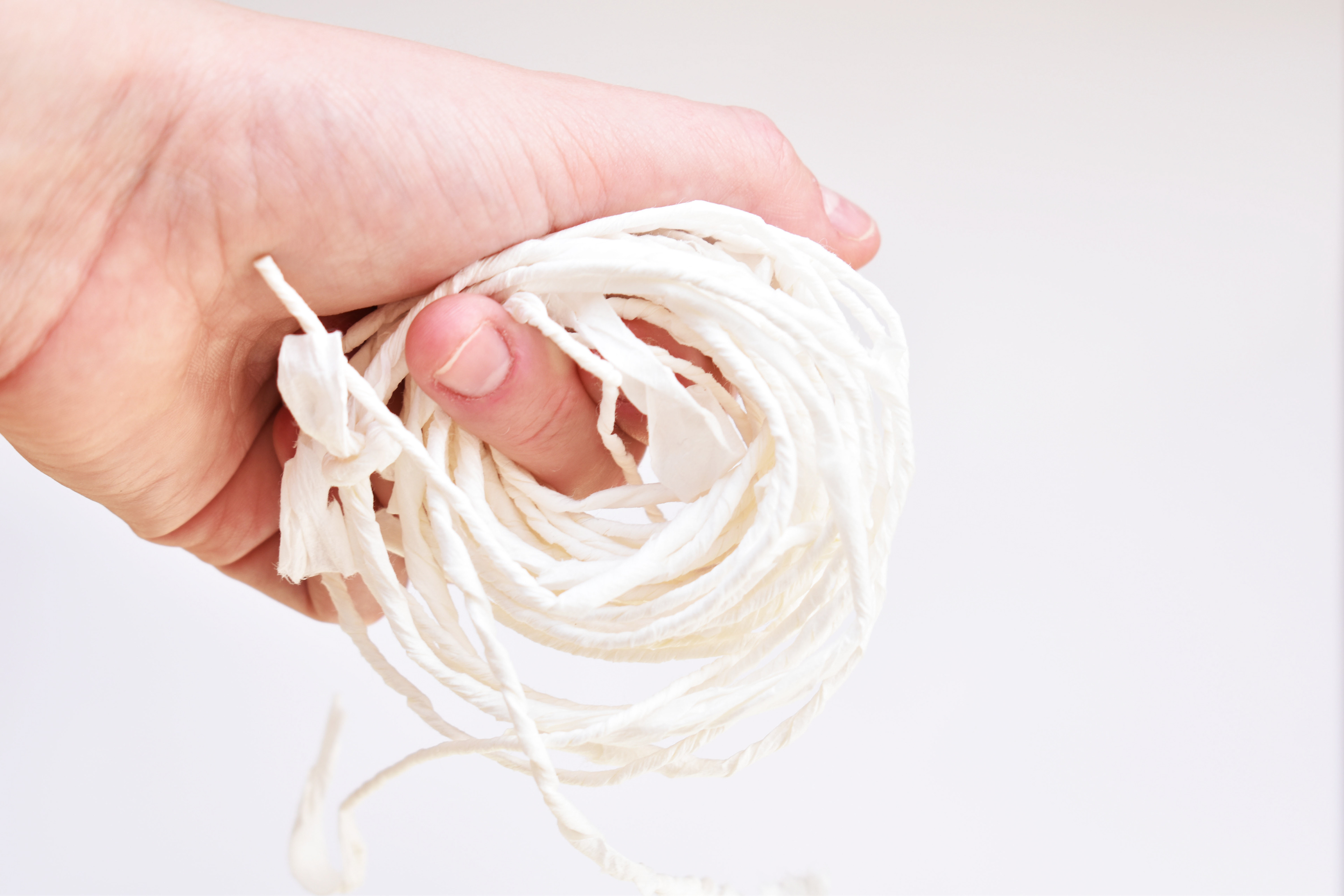
Several coffee based material iterations. Given that the desired form was a textile weave, bioplastic trials proved ineffective. A coffee filter string was settled on.
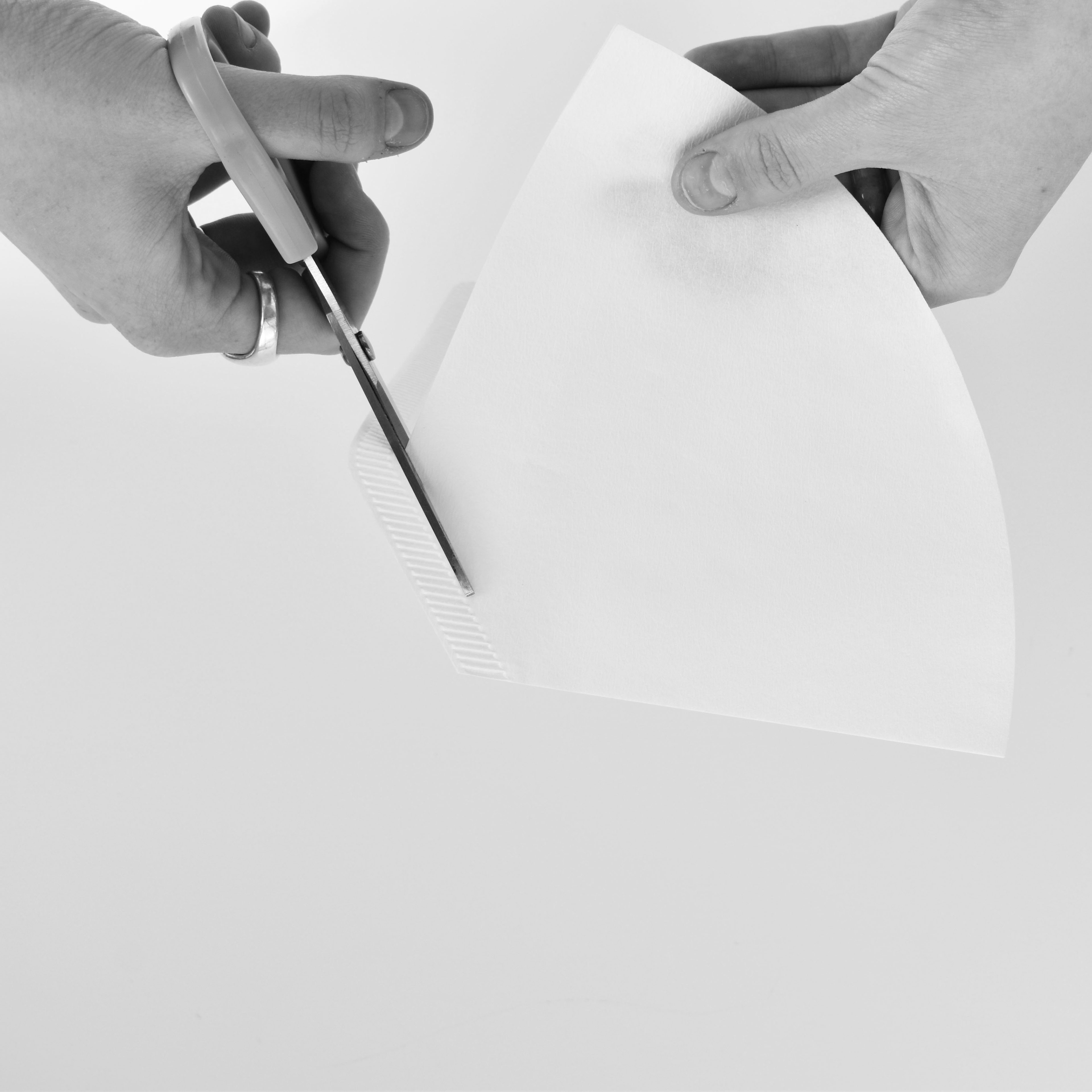
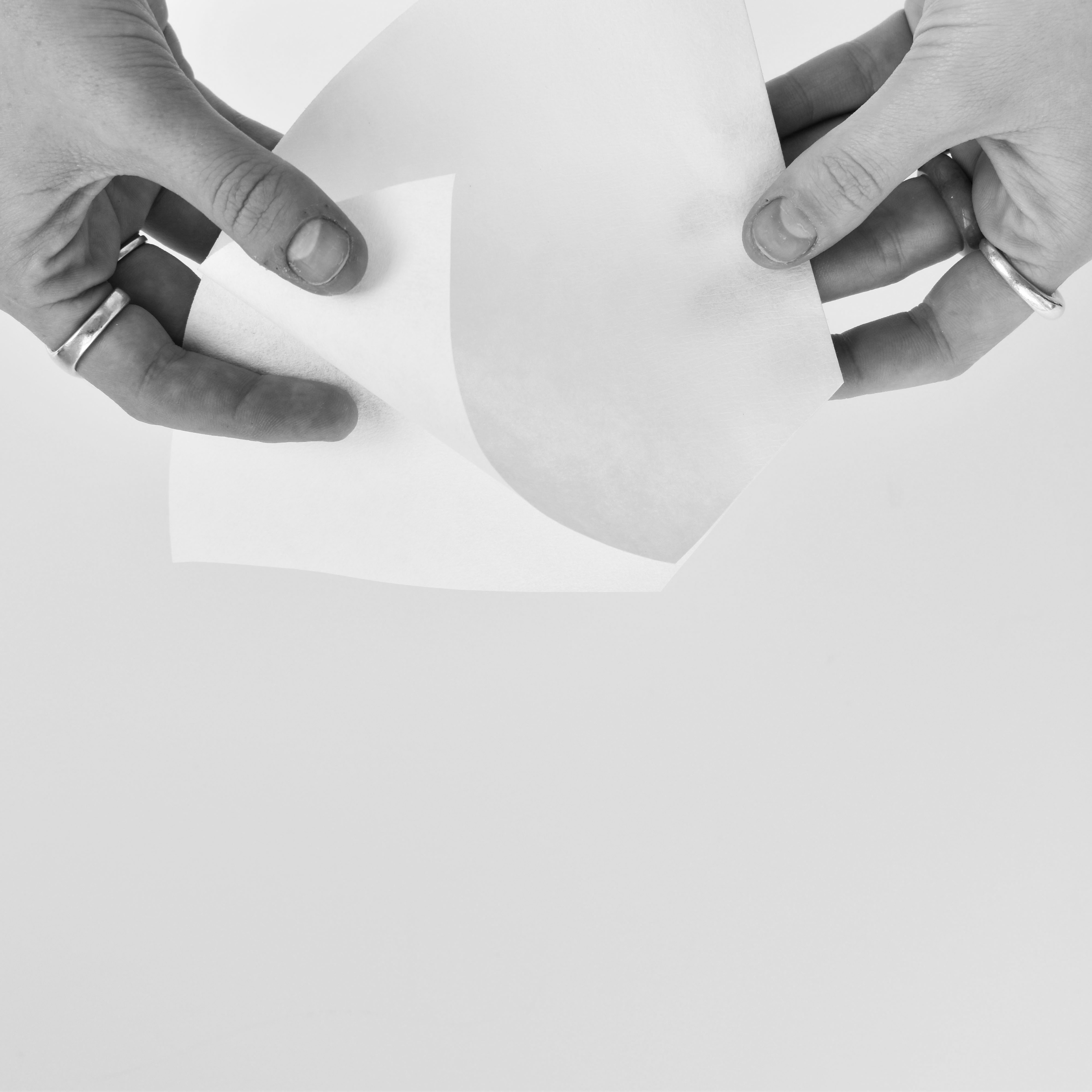

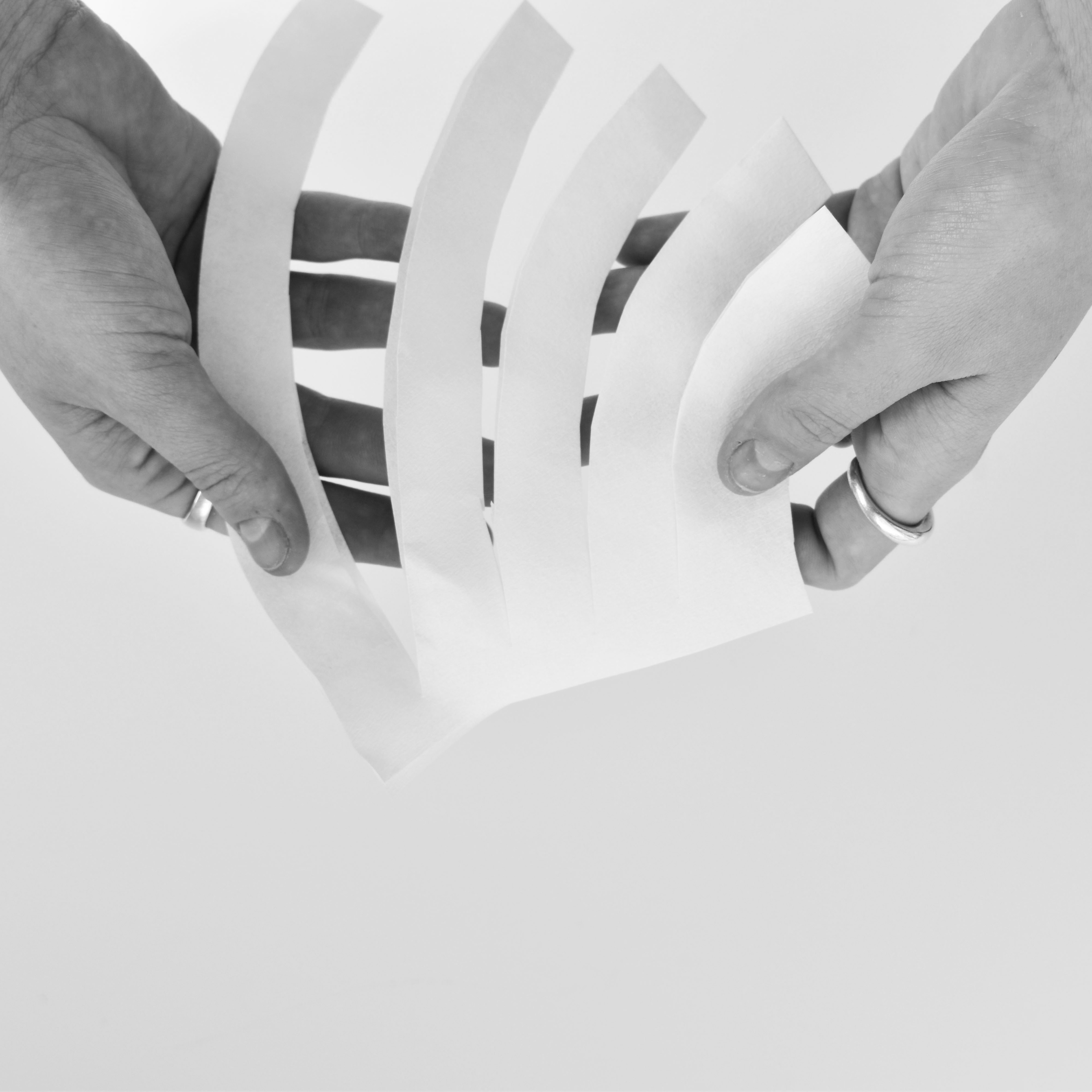

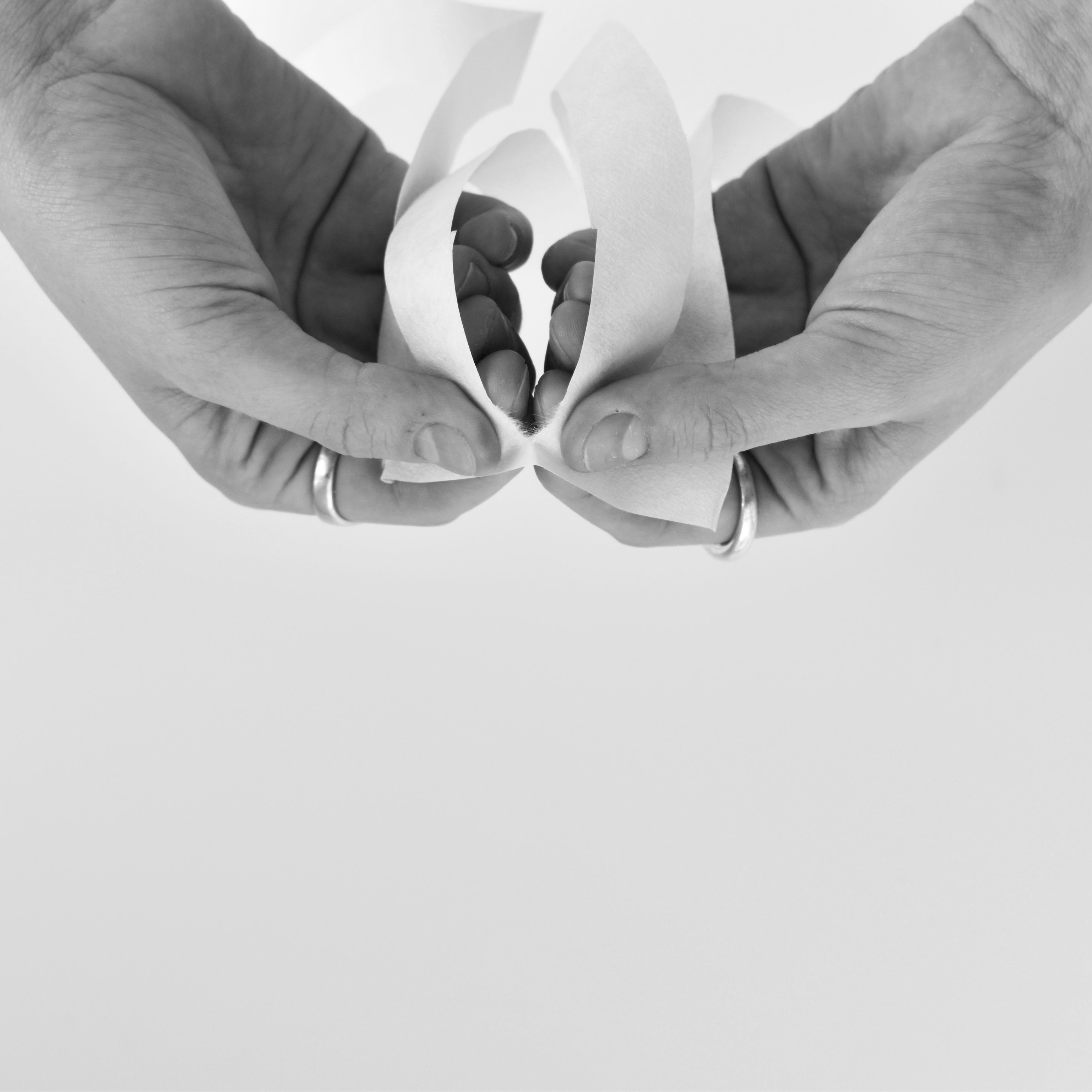
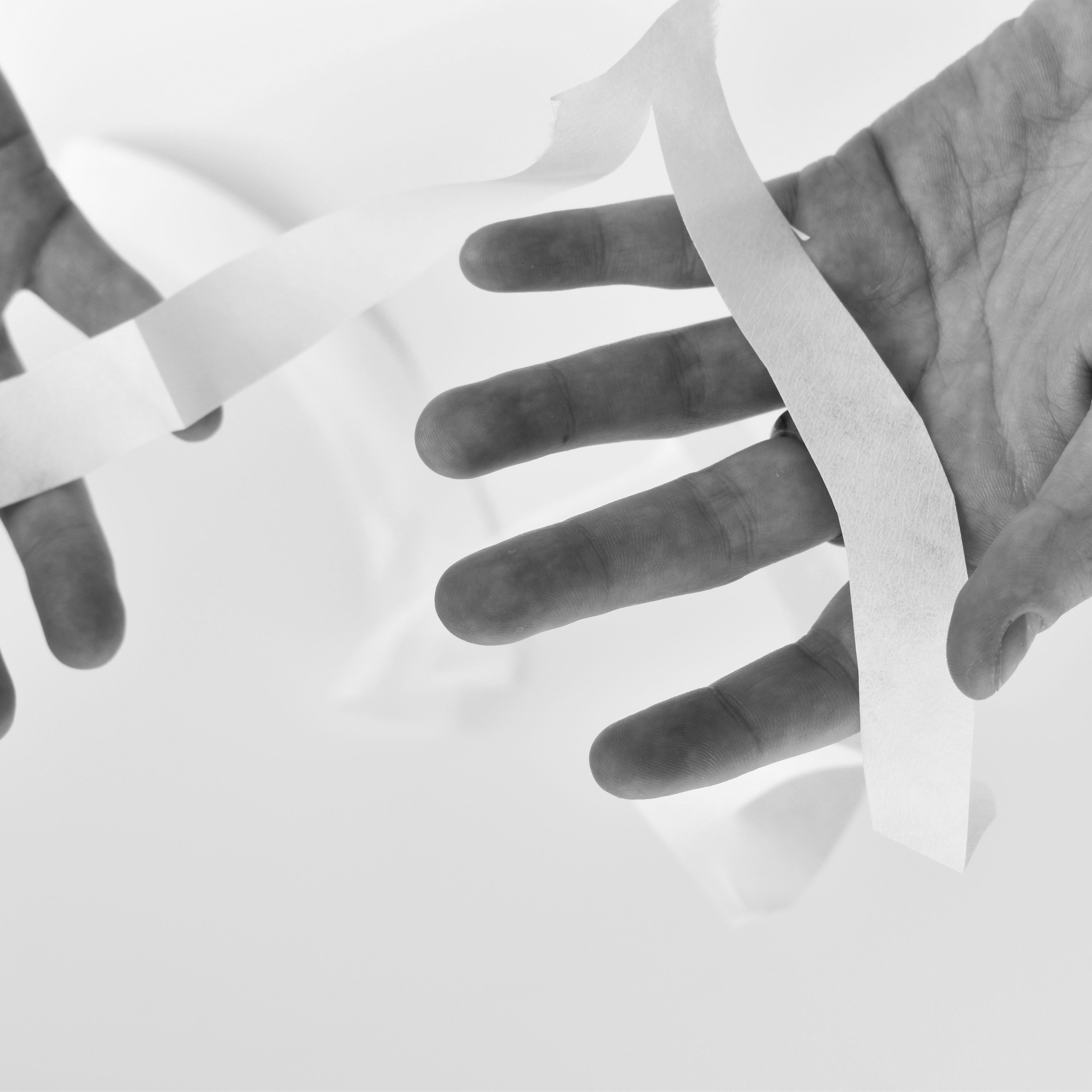

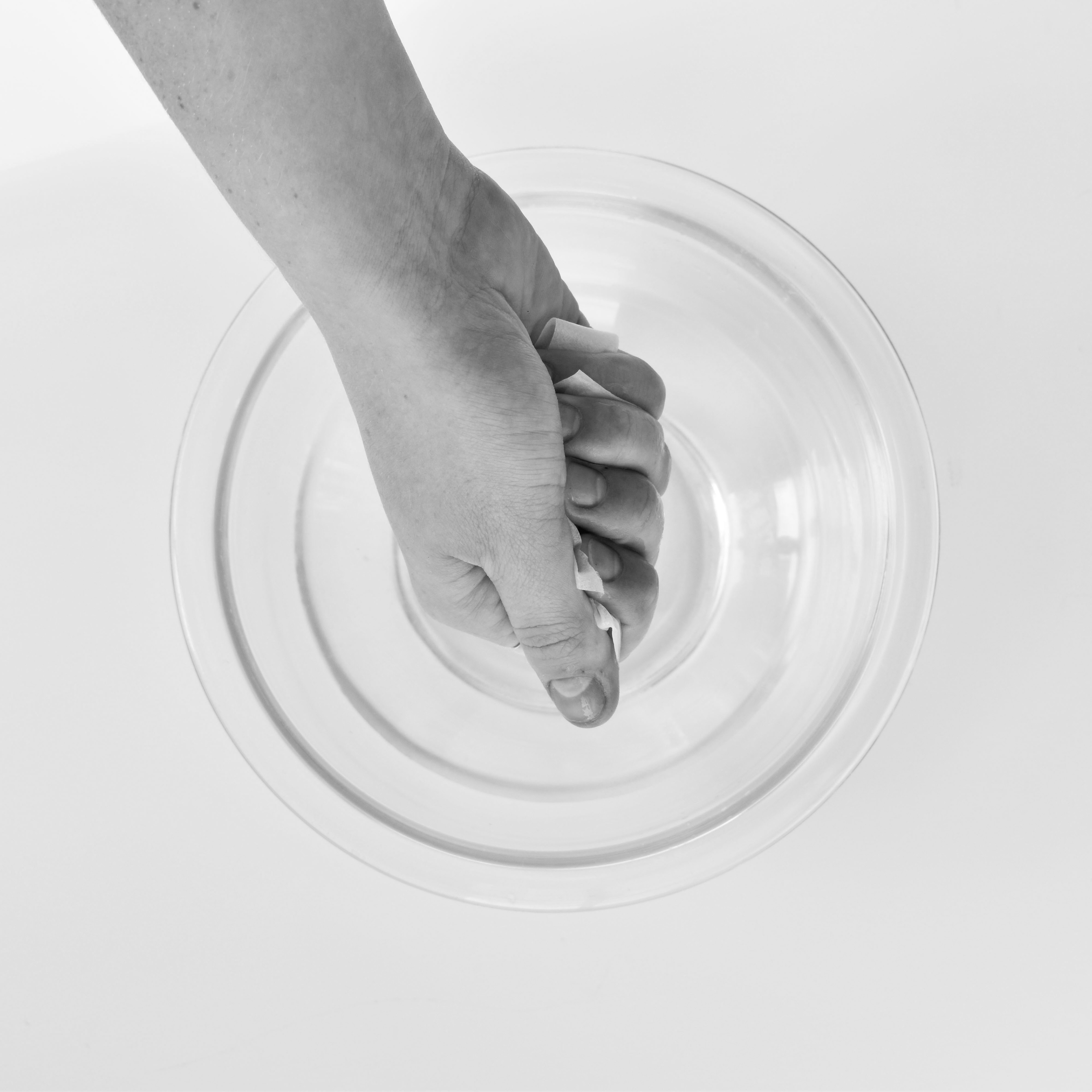


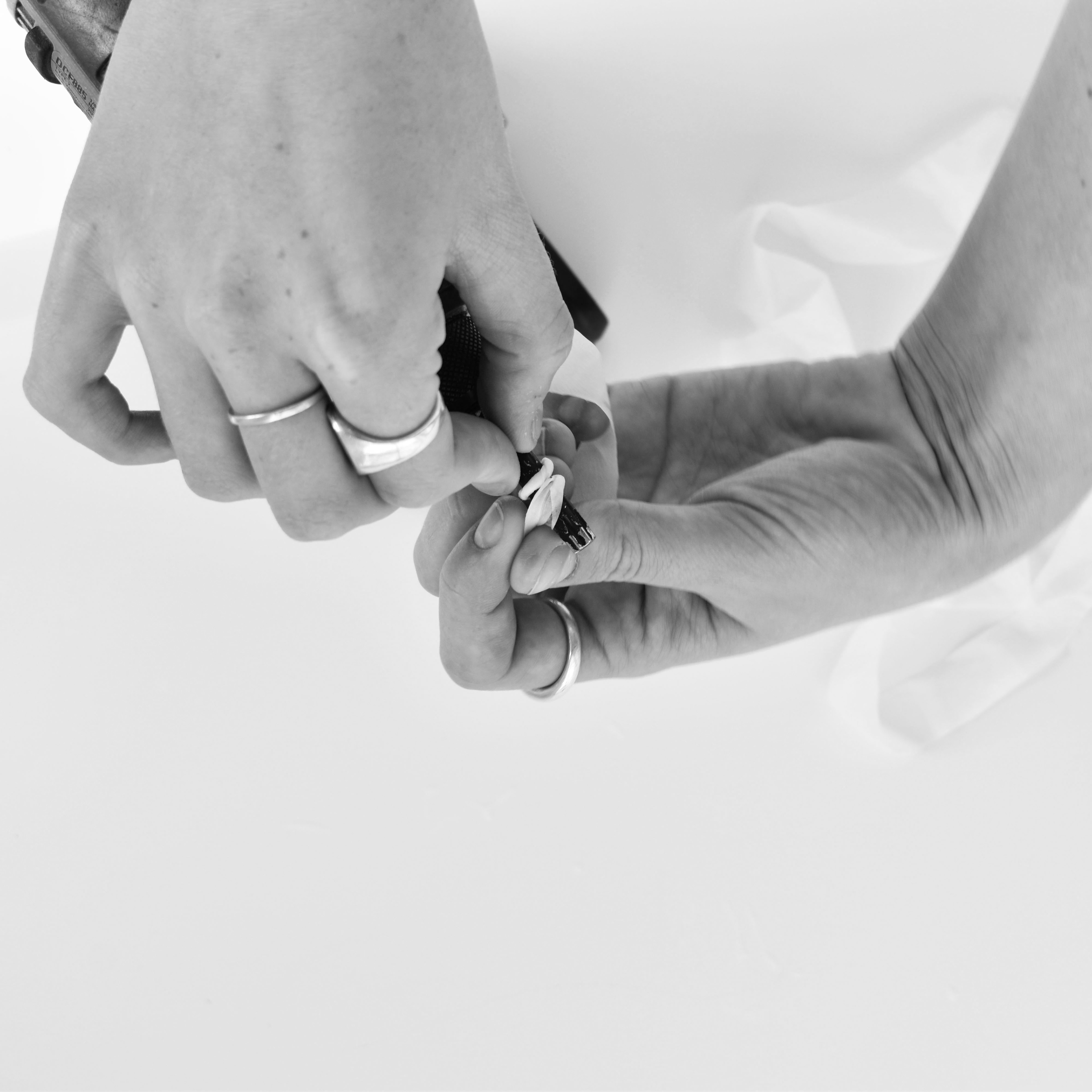
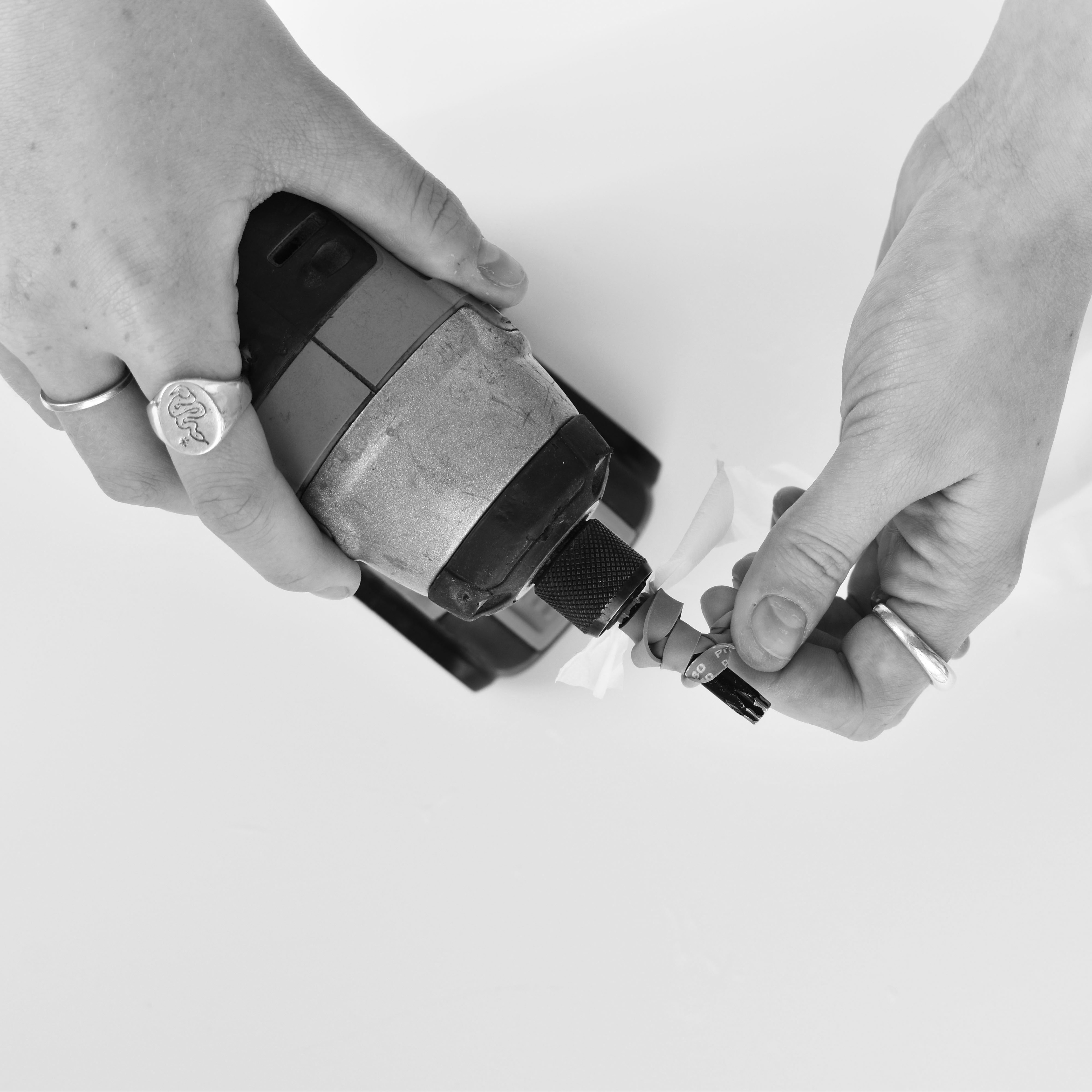

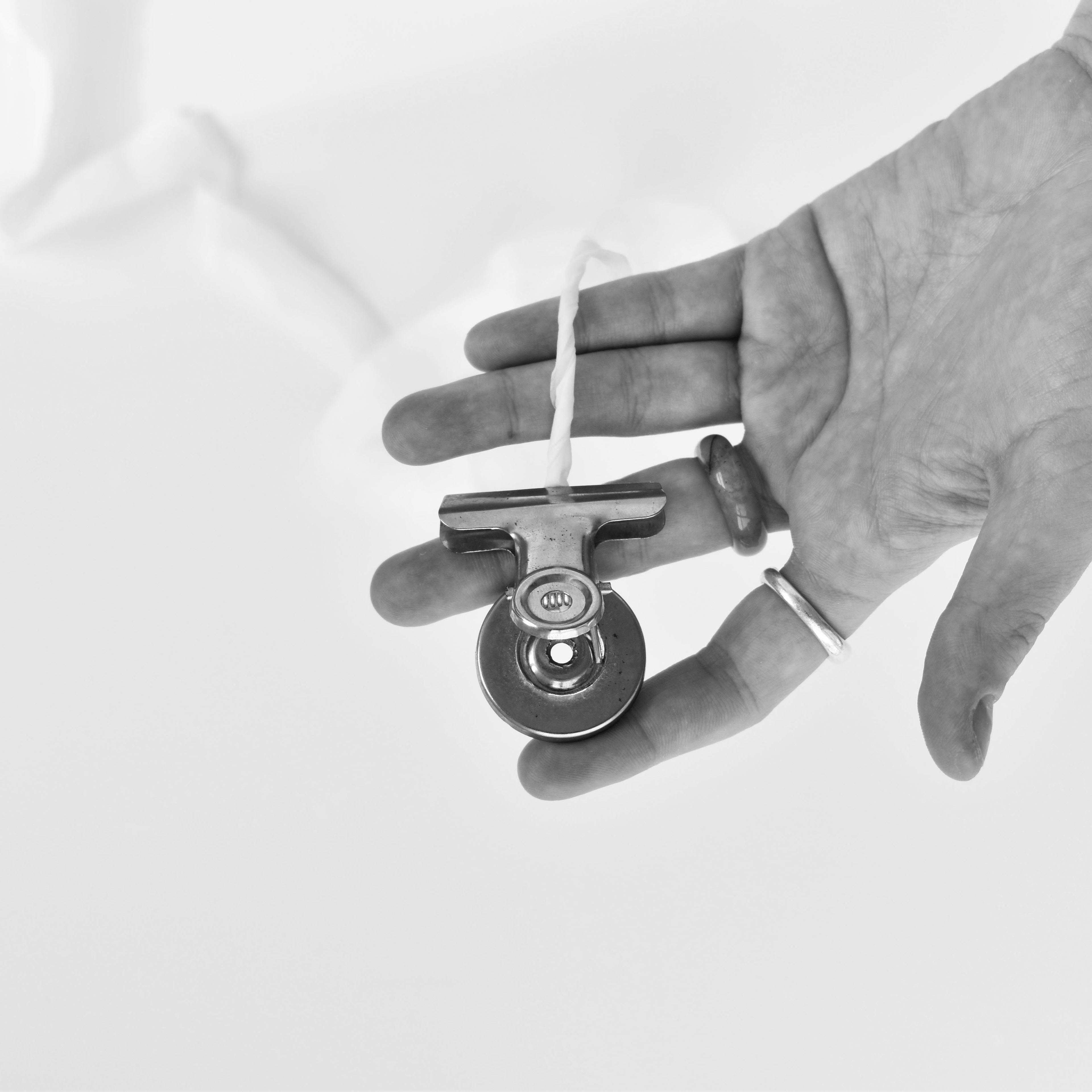
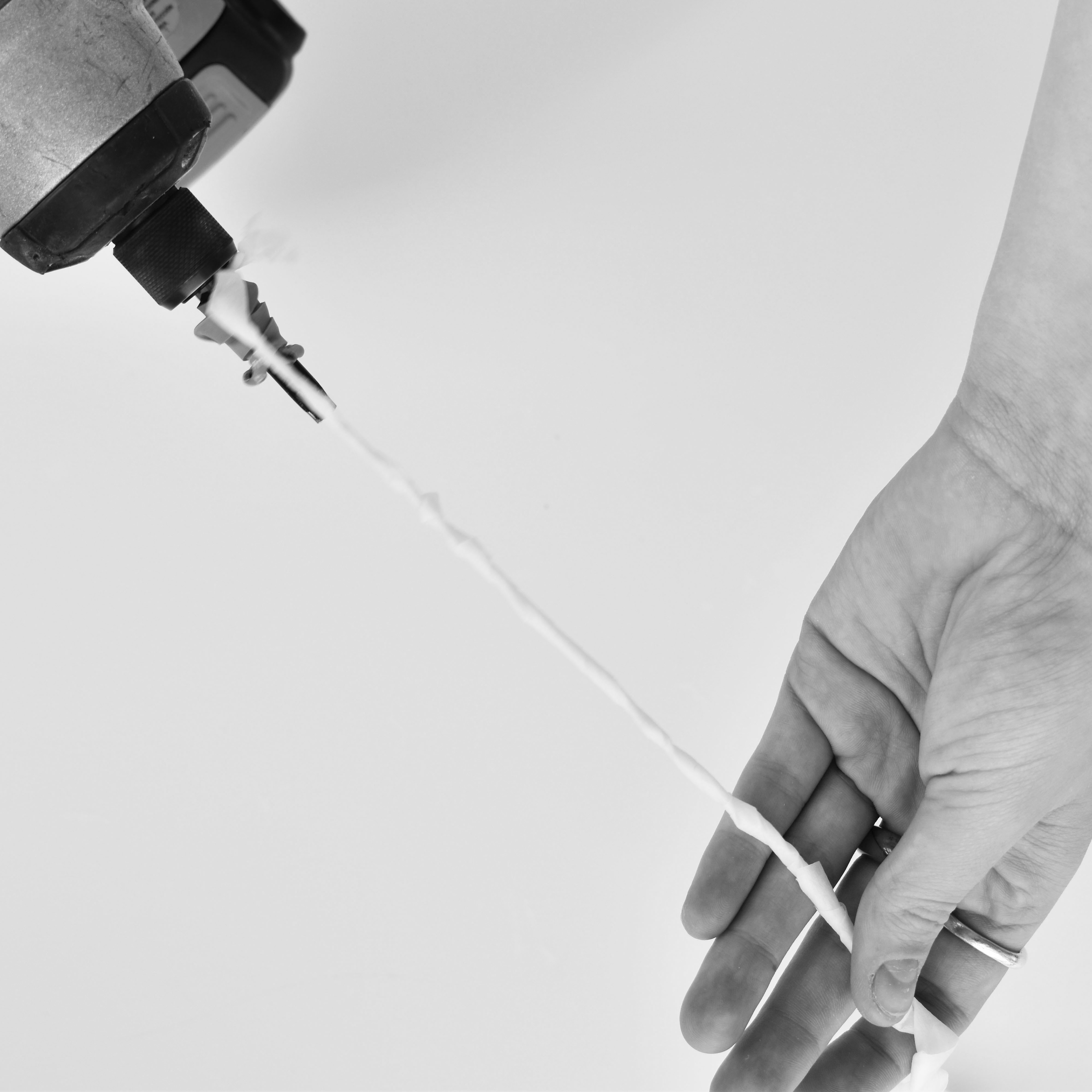

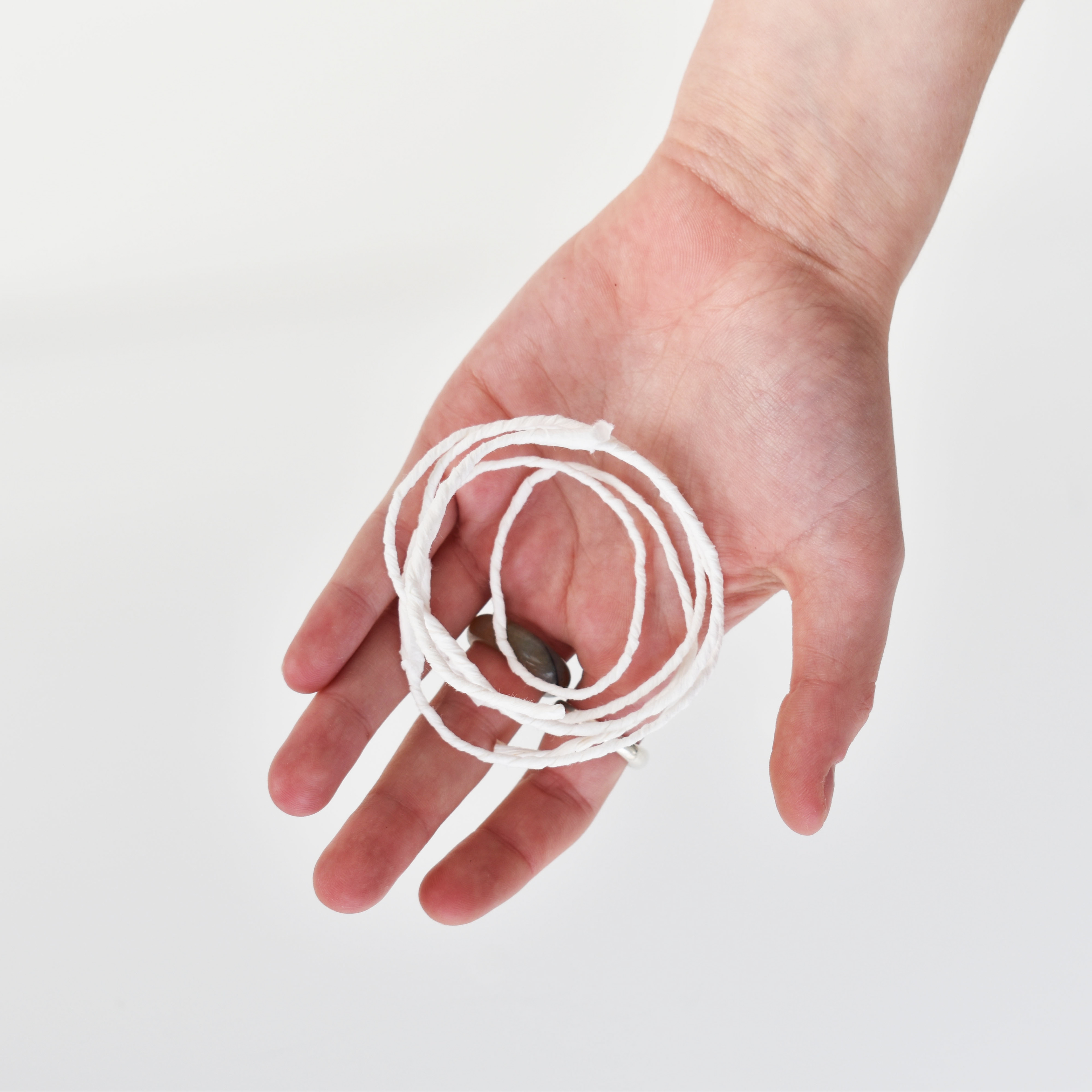
Coffee filter string fabrication -
Another remnant of making coffee in my routine is filters. Based loosely on the Japanese method of paper spinning, Shifu, over 200 filters were cut, soaked, and spun into a thread.
These are compostable.
Over 200 coffee filters were cut, soaked, and strung, then woven into a grid form textile.
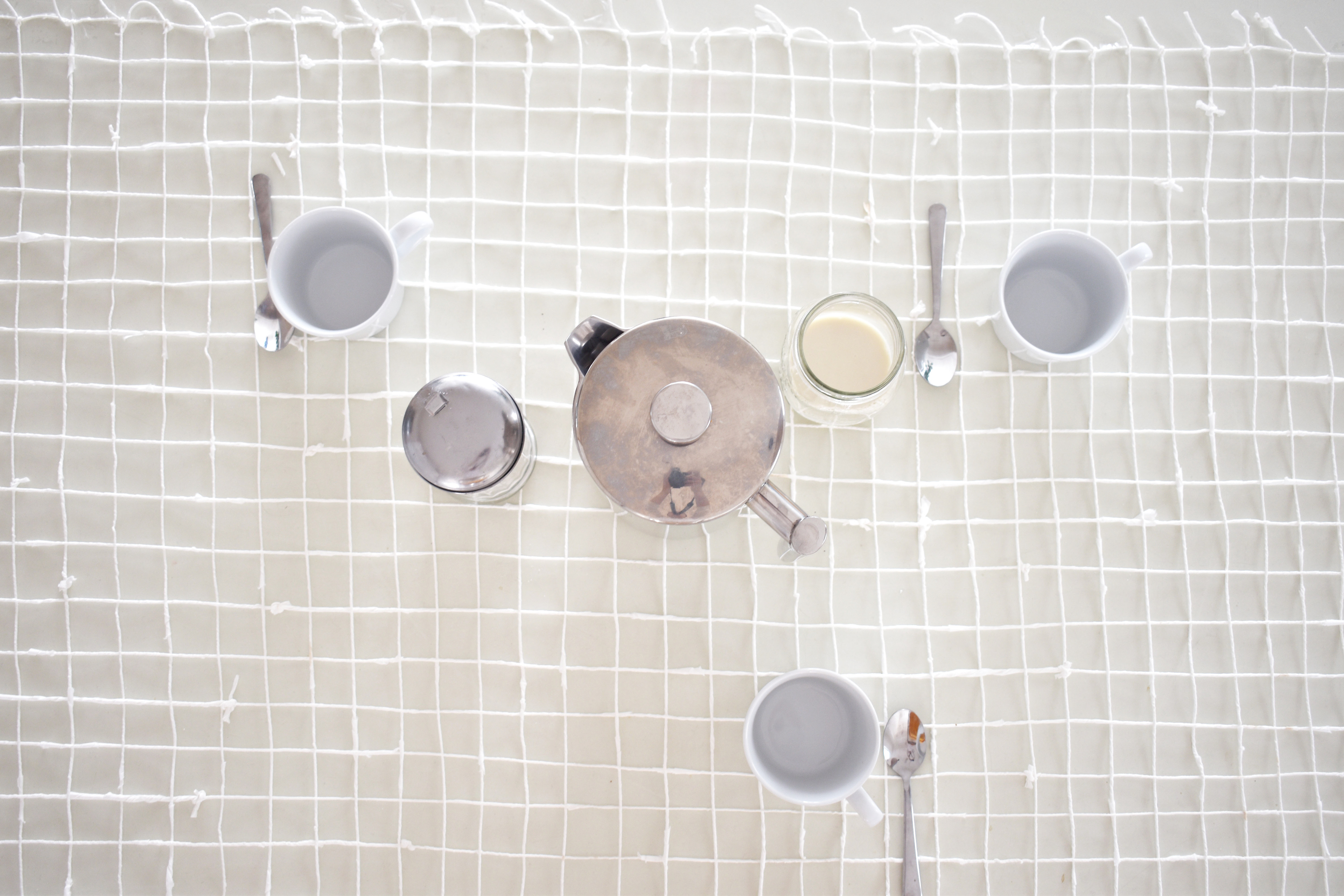

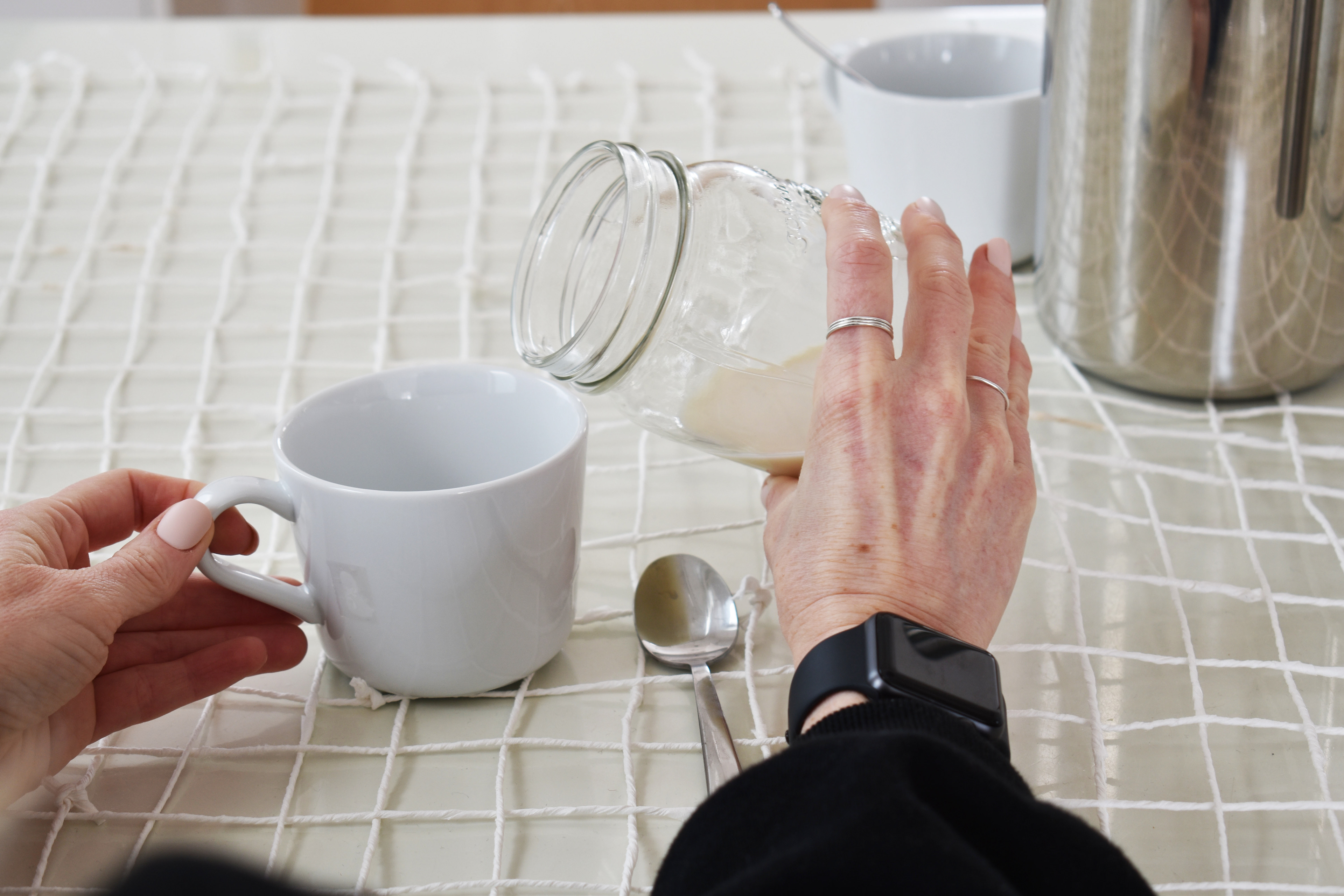
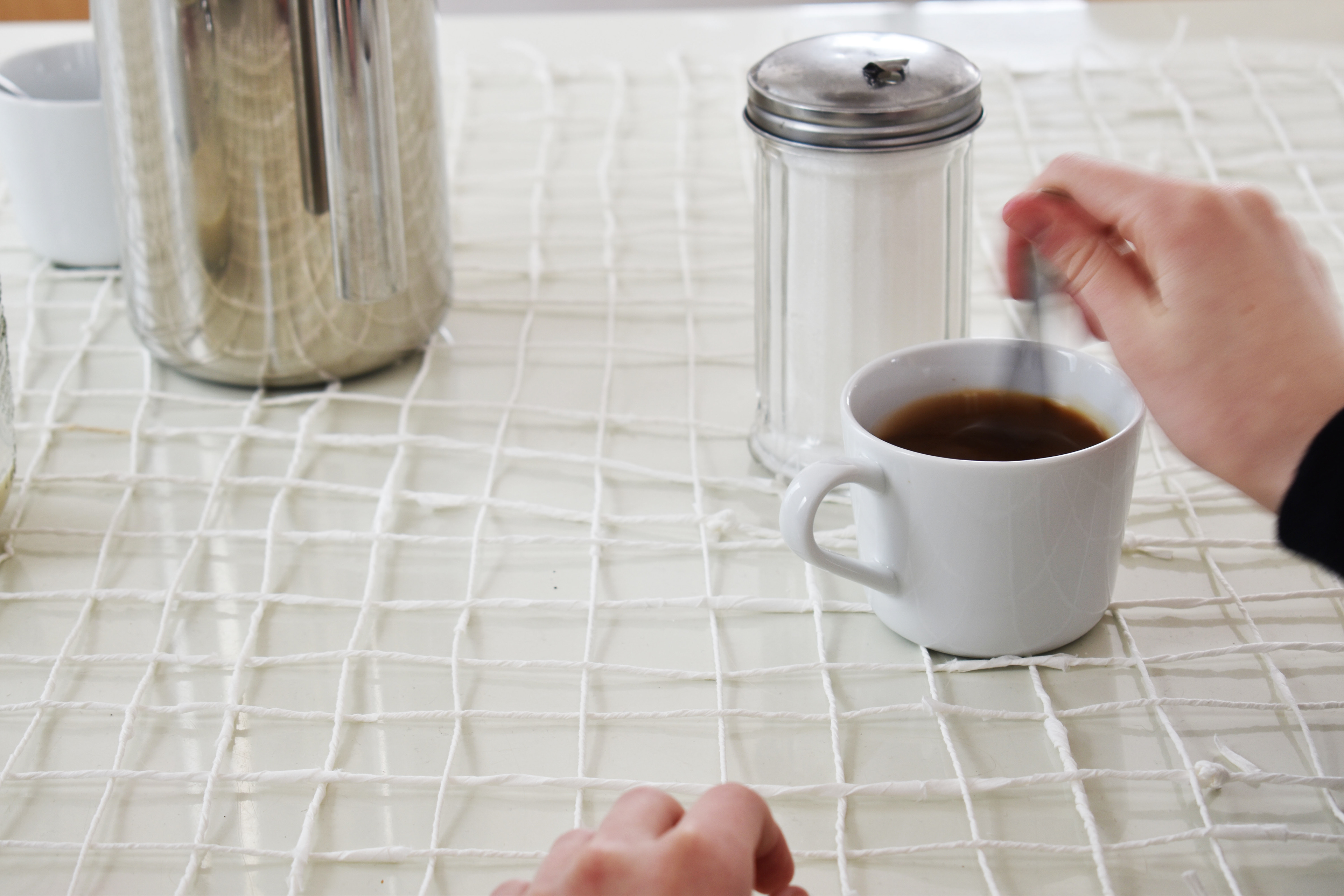
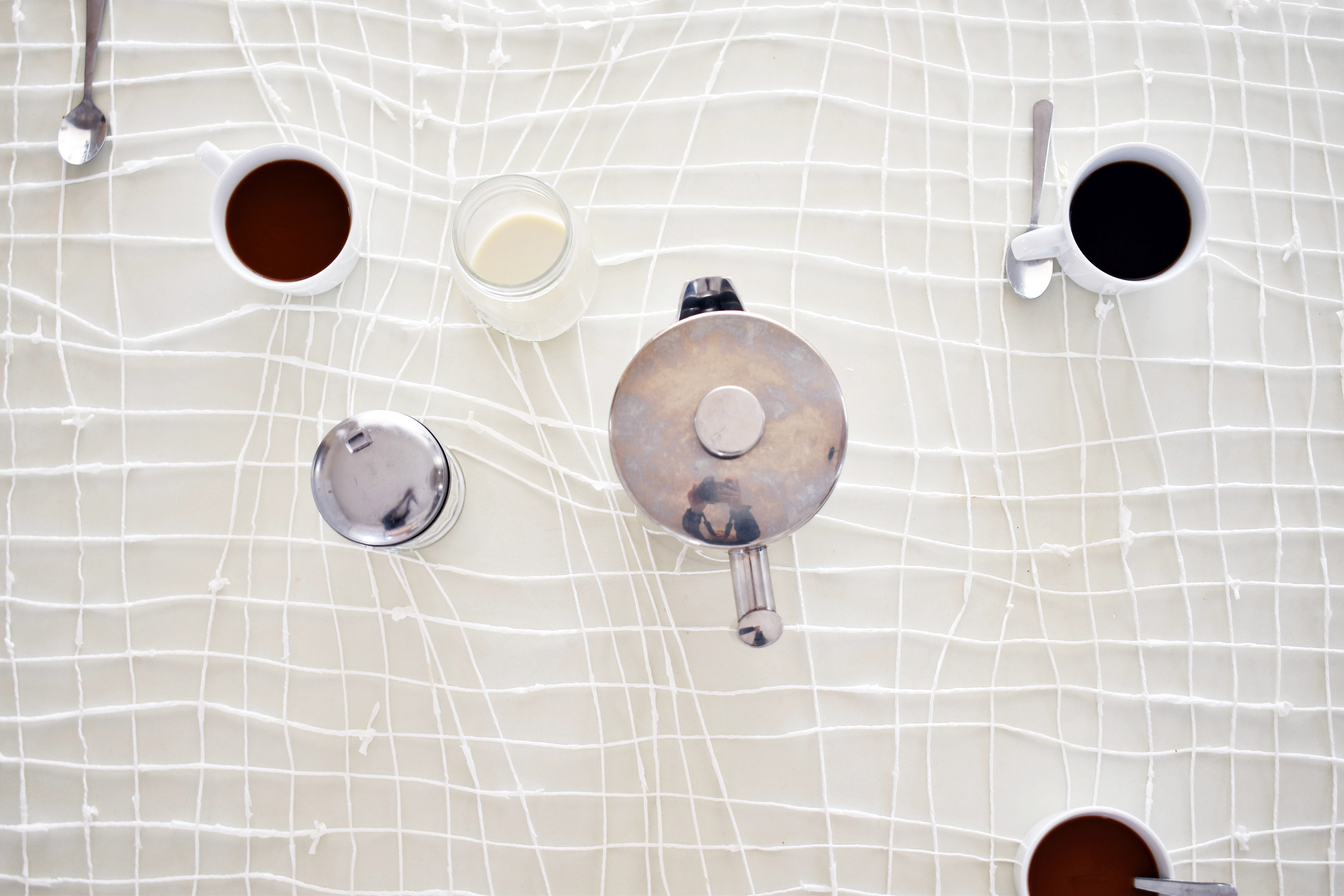
In analyzing the feast and resulting aftermaths, roles and moods of feasters became physically evident. Bored or reserved feasters place setting were far more deformed than feasters engaged in conversation. This added layer of aftermath contextualizes what would otherwise be a mess of cups and spoons.
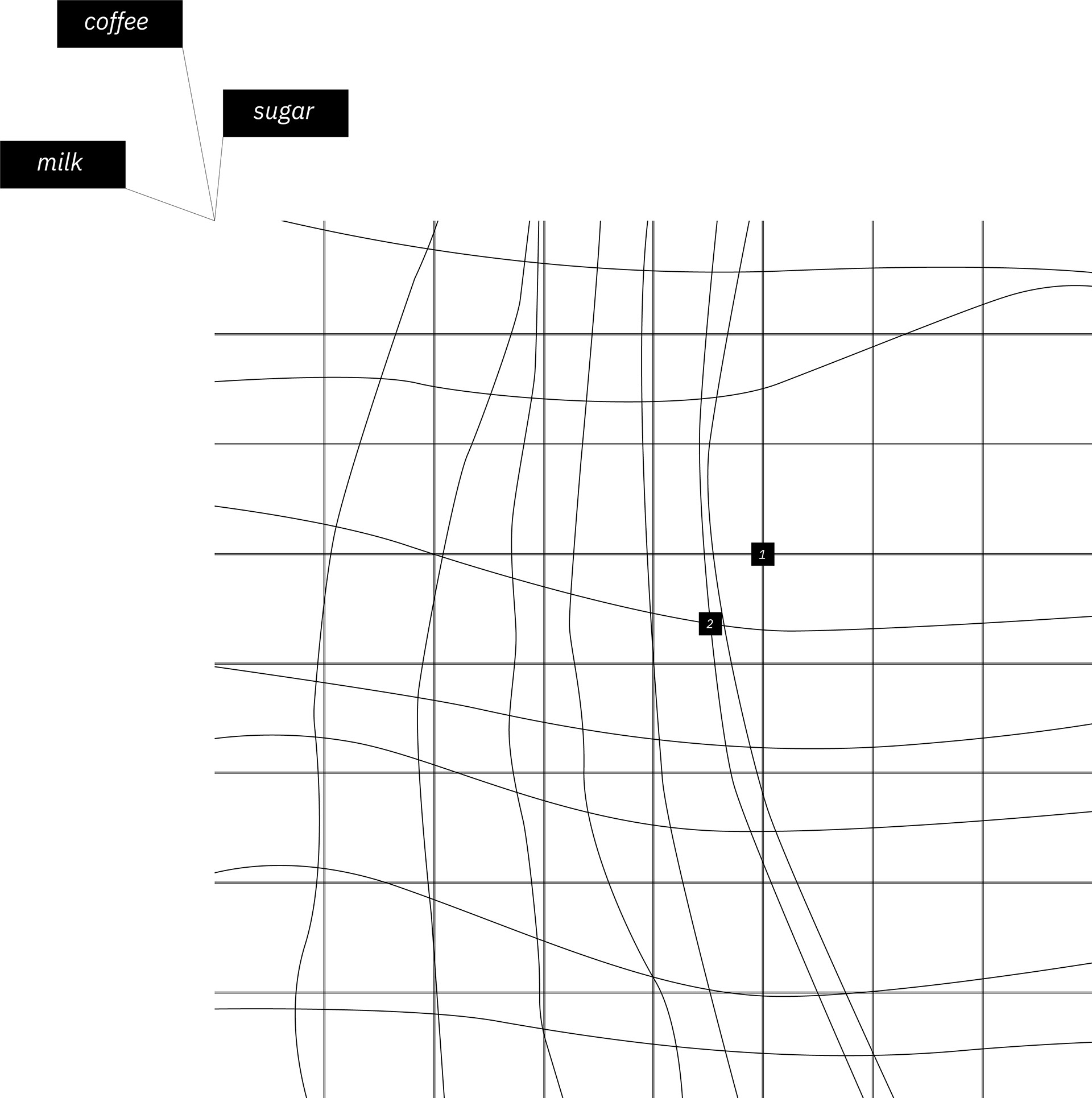
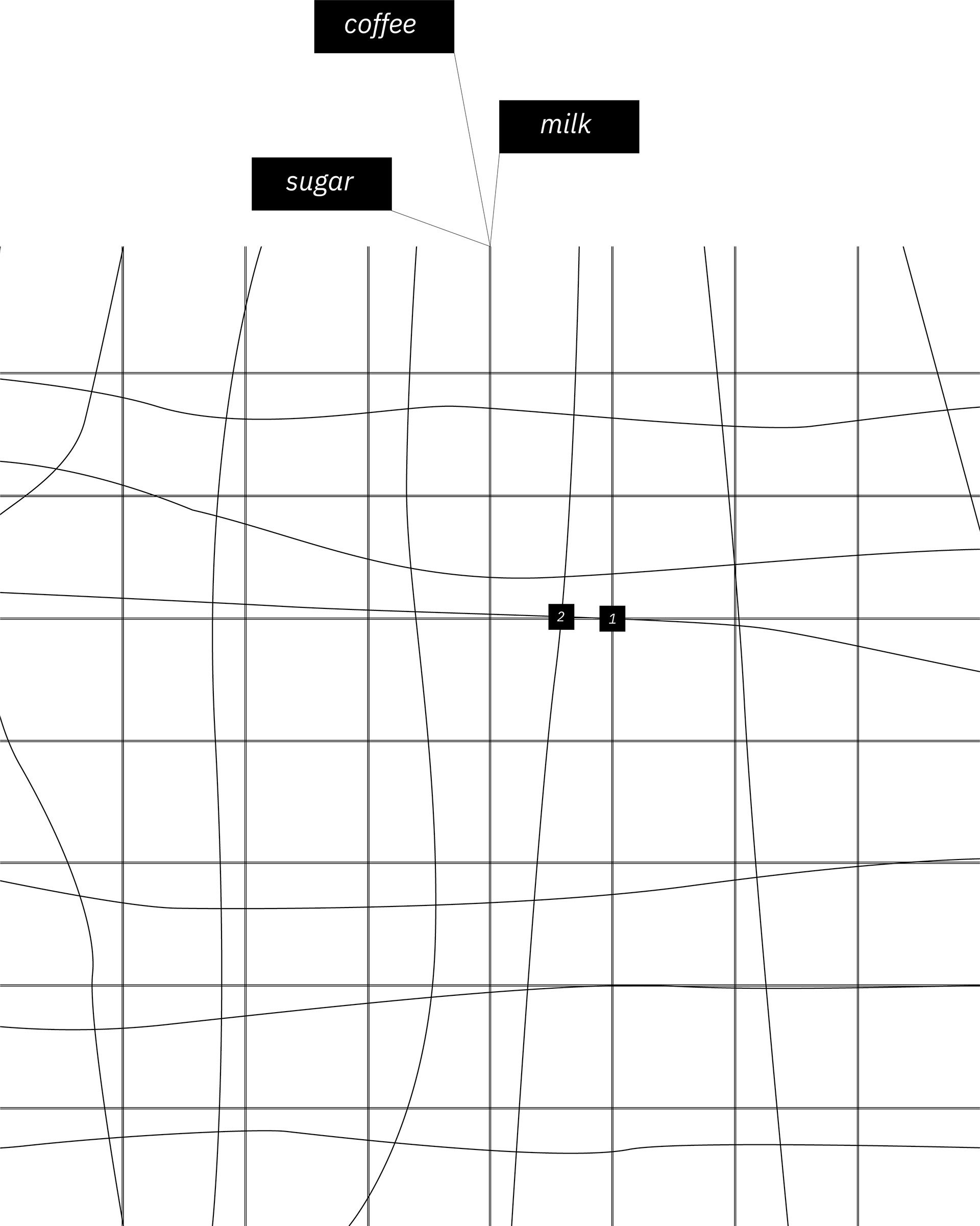

Overlay illustrations of the before and after state of the textile, as well as feasters cups. Although the cups not moving far, the entirety of their movement was captured.
